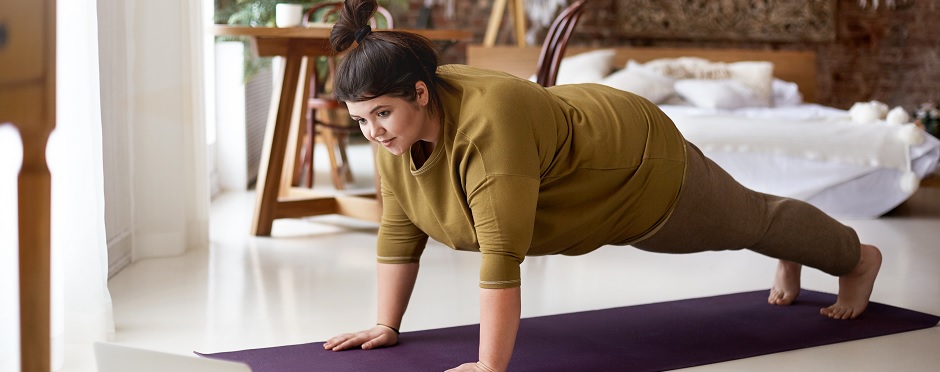
How Core Strength Can Help with Back Pain
Leave a CommentLow back pain is one of the most common and debilitating diagnoses that physical therapy can help improve. It is estimated that 60-70% of people throughout the world will suffer from low back pain at some point during their life. In the United States, it is estimated that 149 billion work days are lost every year from low back pain, costing workers and companies between $100-200 billion dollars each year. Lower back pain or pain in the lumbar spine can be from occupational postures such as sedentary desk work that may lead to poor posture, heavy labor job demands, and being overweight. Evidence shows that core strengthening through a physical therapy program will help alleviate pain.
The goal of core stabilization exercises is to improve your abdominal strength and increase the stability in your lower back or lumbar spine. A 2017 study measured the effectiveness of physical therapy to decrease low back pain and found that participating in a ten-week core stabilization program decreased low back pain.4 This study examined ten core stabilization exercises. Of these ten exercises, planks and side planks (shown below) are amongst the easiest to recreate at home. Additionally, here are a few other exercises that your physical therapist may prescribe to you:
Planks
- Get in plank position. Your forearms and toes will be weight bearing on the ground, your back should stay even, and your legs should stay straight.
- Maintain a straight back while keeping your core tight. To do this, lightly contract your abdominals by pulling your navel in toward your stomach.
- Hold for 10 seconds and work up to 1 minute.
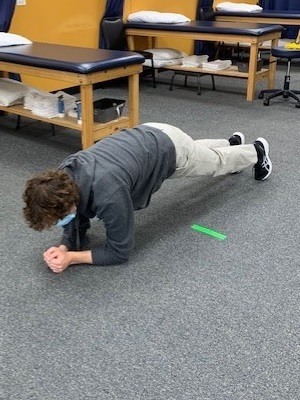
Side Planks
- Maintain a tight core with weight bearing on your forearm and sides of your feet. Have your legs in line with your bottom leg over your top leg. Be sure to keep your hips high and do not let them drop.
- Maintain proper form and increase your time as you improve.
- Do this exercise on both the right and left side.
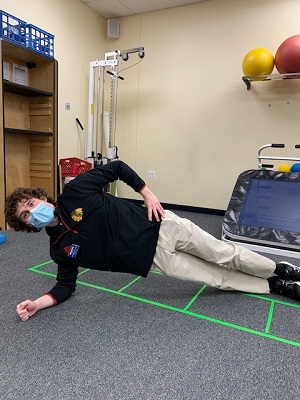
Pallof Press
- Using weight or pulley, maintain a mini squat position and try not to move your body.
- Maintain a tight core the whole time.
- The weight is going to try to pull you the opposite way, but your core is kicking in to maintain a neutral position.
- Hold for about 30 seconds performing 3 repetitions facing each way. Perform this activity on both sides.
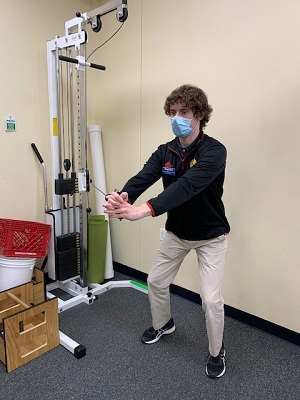
Deadbugs
- Begin with the picture to the right, laying on your back.
- Then, maintain a tight core, and lower your opposite arm and opposite leg to the ground.
- When your right arm lowers to the ground, your left leg lowers to the ground.
- Alternate back and forth for about a minute for each set.
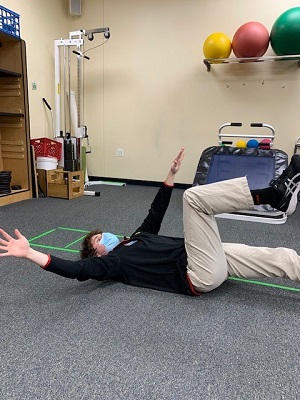
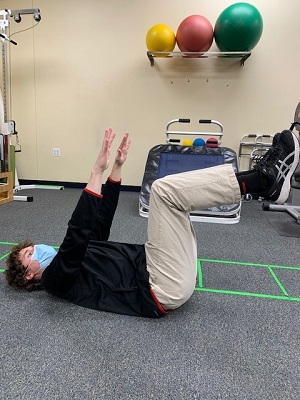
Posterior Pelvic Tilt
- Lay on back with knees bent.
- Lightly contract your core, flatten your back against the floor, and hold for 3 seconds.
- Perform about 30 times. This will lightly activate your core and allow to progress to more advanced exercises.
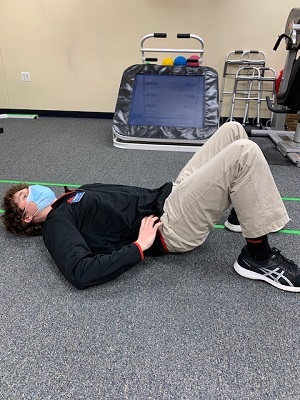
Try Physical Therapy for Back Pain Relief
Evidence has proven that seeing a physical therapist as the first medical intervention for low back pain has been found to decrease opiate prescription and reduce the number of emergency room visits.5 Specifically, this data showed that seeing a physical therapist first reduced probability of opioid prescription by 89.4%, reduced chances of having advanced imaging performed by 27.9%, and cut emergency department visits by 14.7%.5 Therefore, when experiencing low back pain, seeing a physical therapist first, has saved patients money in the long run, while also decreasing their pain.
If you are experiencing low back pain, seek help from a physical therapist. In addition to relieving your pain, physical therapy will be able to strengthen your abdominal muscles, improve your body mechanics, and perfect your posture to decrease risk of developing low back pain in the future. To get started, schedule a free assessment available in-clinic and virtually through our Telehealth platform.
Physical therapy is usually the thing you are told to do after medication, x-rays or surgery. The best way to fix your pain is to start where you normally finish – with physical therapy at Athletico.
The Athletico blog is an educational resource written by Athletico employees. Athletico bloggers are licensed professionals who abide by the code of ethics outlined by their respective professional associations. The content published in blog posts represents the opinion of the individual author based on their expertise and experience. The content provided in this blog is for informational purposes only, does not constitute medical advice and should not be relied on for making personal health decisions.
References:
1. “Low Back Pain.” World Health Organization, www.who.int/medicines/areas/priority_medicines/Ch6_24LBP.pdf.
2. Katz JN. Lumbar disc disorders and low-back pain: socioeconomic factors and consequences. J Bone Joint Surg Am, 2006, 88(suppl 2):21-24.
3. Rubin DI. Epidemiology and risk factors for spine pain. Neurol Clin, 2007, 25(2):353-371.
4. Akhtar, Muhammad Waseem, et al. Pakistan Journal of Medical Sciences, July 2017, pp. 1002–1006.
5. Frogner, Bianca K., et al. “Physical Therapy as the First Point of Care to Treat Low Back Pain: An Instrumental Variables Approach to Estimate Impact on Opioid Prescription, Health Care Utilization, and Costs.” Wiley Online Library, John Wiley & Sons, Ltd, 23 May 2018, onlinelibrary.wiley.com/doi/abs/10.1111/1475-6773.12984.
